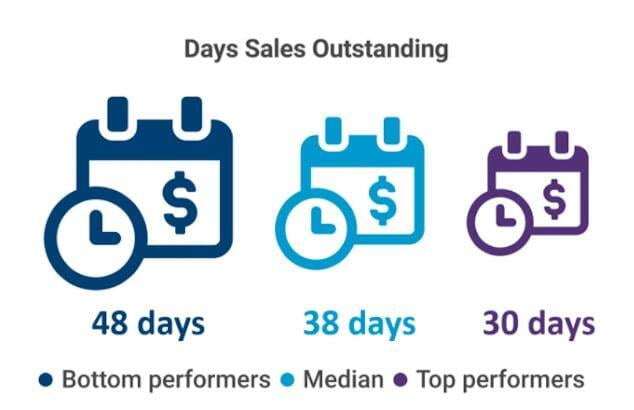How to Calculate Days Sales Outstanding
Days Sales Outstanding (DSO) is the average number of days that receivables remainoutstandingbefore they are collected. It is used to determine the effectiveness of a company's credit and collection efforts in allowing credit to customers, as well as its ability to collect from them.
To calculate your days sales outstanding, you’ll need to pull information from an aged accounts receivable report or a balance sheet. Once this information has been gathered, you’re ready to calculate your DSO.
1. Determine the period to cover
It’s up to you to determine the period you want to cover when calculating DSO. Smaller businesses may find it more useful to calculate DSO quarterly, although businesses that frequently sell on credit should do a DSO calculation monthly.
2. Calculate beginning accounts receivable total for the period
This information can be obtained from a balance sheet that is run as of the first date of the period you’ll be examining. For instance, if you wish to calculate DSO for the first quarter of 2020, you’d run a balance sheet as of Jan. 1, 2020, to locate your beginning accounts receivable balance.
3. Calculate ending accounts receivable total for the period
Obtaining your ending accounts receivable balance is done the same way, only this time you’ll run a balance sheet report as of March 31, 2020.
4. Determine average accounts receivable for the period
For this calculation, just take your beginning accounts receivable balance and your ending accounts receivable balance for the time frame you selected.
For example, if your Jan. 1, 2020, accounts receivable balance was $27,000 and your ending accounts receivable balance was $31,000, you can calculate your average balance like this: ($27,000 + $31,000) ÷ 2 = $29,000
Now you know that $29,000 was your average accounts receivable balance for the first quarter.
5. Calculate total credit sales for the period
This calculation can get a bit tricky if you don’t keep track of cash sales separately. If you do, all you need to do is locate your total sales for the period. Be sure and subtract any returns or adjustments, and if you don’t track cash sales automatically, you’ll have to subtract those as well.
For example, if you had credit sales of $57,000 for the first quarter of 2020, with returns totaling $1,500, your total sales for the period would be $55,500.
6. Determine the number of days in the specified period
If you’re calculating DSO for the month, you use the number of days in the month. In our example, we’re calculating DSO for the quarter, so we’ll need to add together the number of days in each month.
- January: 31 days
- February: 29 days (leap year)
- March: 31 days
So, the total days for the first quarter would be 91.
7. Calculate DSOWith all the information gathered, you’re now ready to calculate days sales outstanding using the DSO formula.
($29,000 average accounts receivable ÷ $55,500 credit sales) x 91 days = 48 days
You now know that it takes your business 48 days on average to collect payment on an invoice. But what do those results mean?
In general terms, a DSO of less than 45 is considered good, but this can vary between industries. For example, a manufacturer selling heavy equipment is more likely to have a higher DSO than a service business. If your DSO comes back fairly high, there are ways you can lower it.
See our article: Five Ways to Get Paid Faster
 According to CFO.com, the median DSO is 38 days. This can vary by industry.
According to CFO.com, the median DSO is 38 days. This can vary by industry.
If your DSO is out of line request a Free Accounts Receivable Analysis! We have helps many businesses improve their cash flow!

